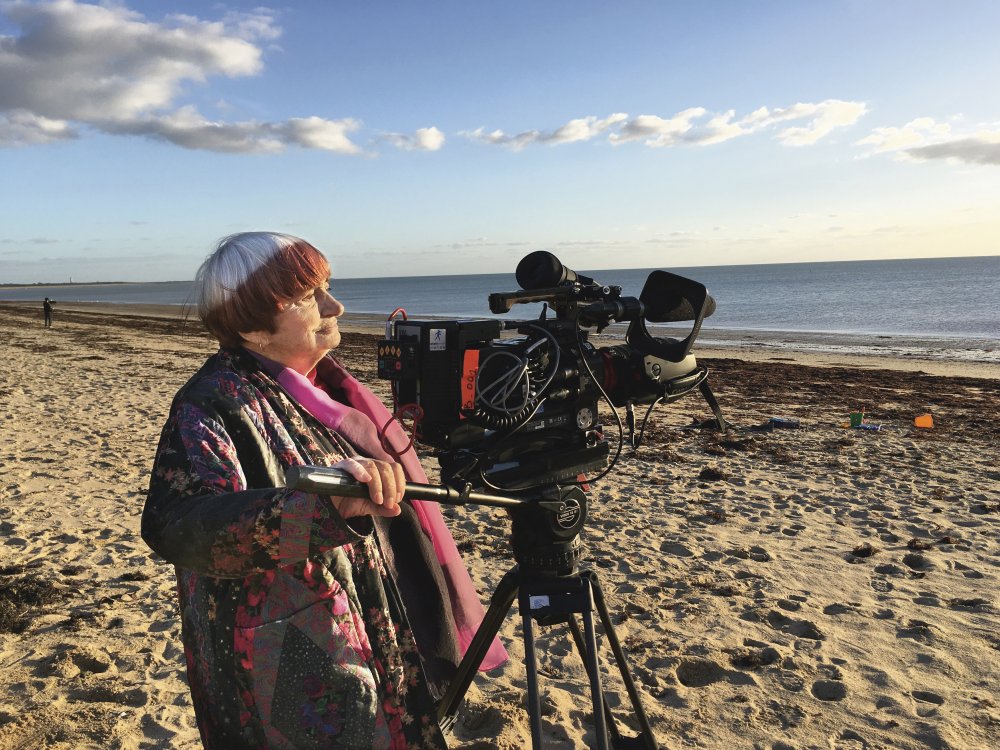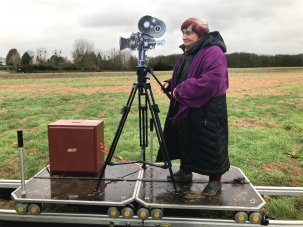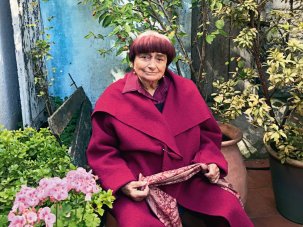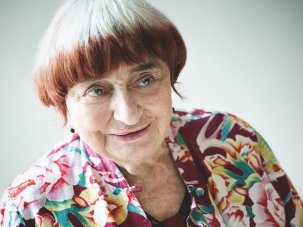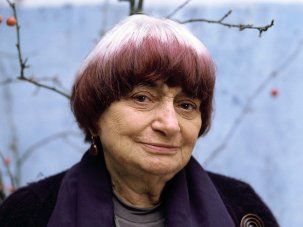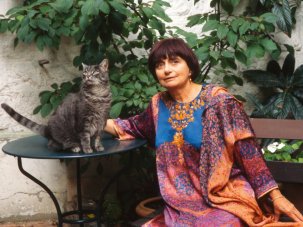When Varda by Agnès premiered out of competition at the Berlin International Film Festival this February, the press notes suggested that the 90-year-old director might be growing tired. The documentary, a self-guided tour through Varda’s back catalogue, was intended as a farewell to filmmaking, as well as a masterclass that could be shown in lieu of an in-person talk. “I don’t want to do press, I don’t want to speak about my work,” read the notes. “After Berlin, the film will be shown instead of me speaking!”
France/USA 2019
Certificate 15 114m 49s
Director Agnès Varda
[1.78:1]
Subtitles
UK release date 19 July 2019
Distributor BFI Distribution
bfi.org.uk/whats-on/bfi-film-releases/varda-by-agnes
► Trailer
These words assume a retrospective significance in the wake of Varda’s death on 29 March this year. What had seemed like a coy withdrawal on the part of the once apparently indefatigable cineaste now appears prophetic. “I wonder if the only real portrait isn’t a death mask,” she pondered during Jane B. par Agnès V. (1987). Varda by Agnès, we now know, is Varda’s swansong – and the final edit and the last word on her more-than-60-year career.
Varda had long been interested in the limits of self-portraiture. She described her films about Jane Birkin and her own late husband Jacques Demy as their “self-portraits”, despite the fact that she is credited as writer and director. And while 2008’s The Beaches of Agnès is widely held to be her first autobiographical feature, even her very earliest films La Pointe Courte (1954) and L’Opéra-Mouffe (1958) hint at a fascination with finding reflections of herself in images of others.
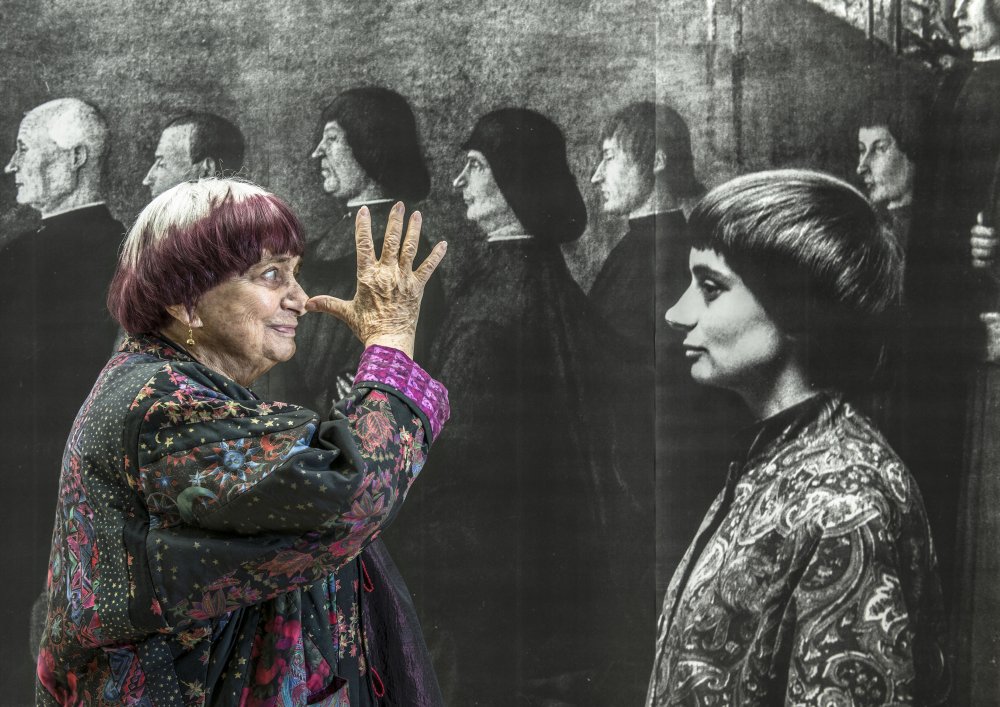
Varda in Faces Places (2017)
Credit: Agnès Varda (c) Cine Tamaris
So it is initially a little disappointing to discover that Varda by Agnès is formally rather conventional. It splices together footage from various public talks with scenes from the director’s oeuvre (at one point we even see Varda discussing footage from 1965’s Le Bonheur as it runs next to her on a pulldown screen at a Harvard lecture, before we switch to scenes from the film itself). Watching Varda by Agnès feels exactly like being present at a screen talk.
It offers a gorgeous trip down memory lane and an impeccably presented primer – one that very much smacks of the official version. It may feel whimsical and off-the-cuff, but this filmic collage is as carefully structured as the director’s other works. She proceeds mostly chronologically, veering off at tangents, looping back, but before long we realise that this material is well planned and – as the seamless edits between different talks make clear – very well rehearsed.
There’s little material here that the aficionado won’t already be familiar with from the growing body of literature and cinematic tributes devoted to Varda: as she wryly acknowledges, in latter years she has been awarded an honorary Palme d’Or and an honorary Oscar, and has been the subject of countless retrospectives and special issues – a bittersweet reminder of her mortality.
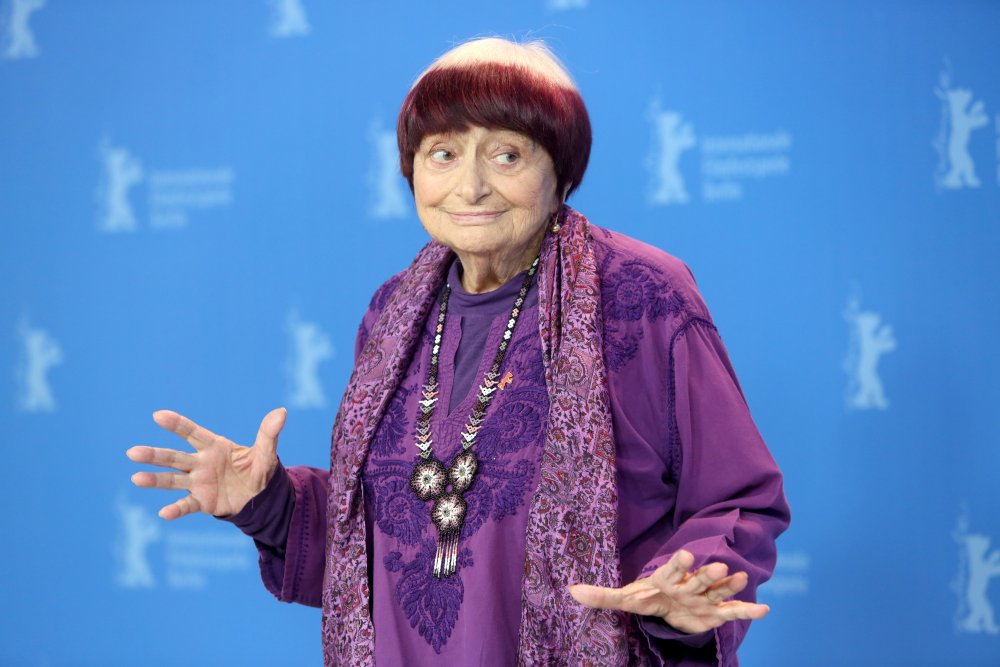
Agnès Varda presenting Varda by Agnès at the 2019 Berlinale
All the same, there’s great pleasure to be taken in hearing familiar anecdotes and insights straight from the proverbial horse’s mouth. Varda’s gravel-voiced descriptions of her films, which soundtrack the accompanying archive footage, are delightful. I defy anyone to watch her talking about even the Catherine Deneuve/Robert De Niro flop One Hundred and One Nights (1994) and not go scuttling off to track down a copy. She muses on how her fear of cancer inspired Cléo from 5 to 7 (1962), and the way her feminism and broader political engagement led to Black Panthers (1968) and One Sings, the Other Doesn’t (1976). “I really took these things to heart,” she tells us (while showing her age, perhaps, in dismissing abortion rights struggle as “history these days”).
Occasionally, she explains her stylistic choices: the tracking shots in Vagabond (1985), for instance, were deliberately filmed back to front, or rather right to left, to lend the film a jarring quality. At other times, she points out tiny details that audiences may have missed: the Hans Baldung Grien painting that inspired Cléo, and that bursts suddenly into colour, the better for us to see it; the playful references to Picasso and Magritte that appear in Lions Love (…and Lies) (1969).
She is also vocal on the materiality of film. Varda by Agnès is structured around the millennial shift from analogue to digital, and while the latter allows Varda a new intimacy with her subjects, she is nevertheless nostalgic for the physical stuff of 35mm. Hence her cinema shacks, greenhouses with partitions and walls built of real reels and containers of prints of films such as Le Bonheur.
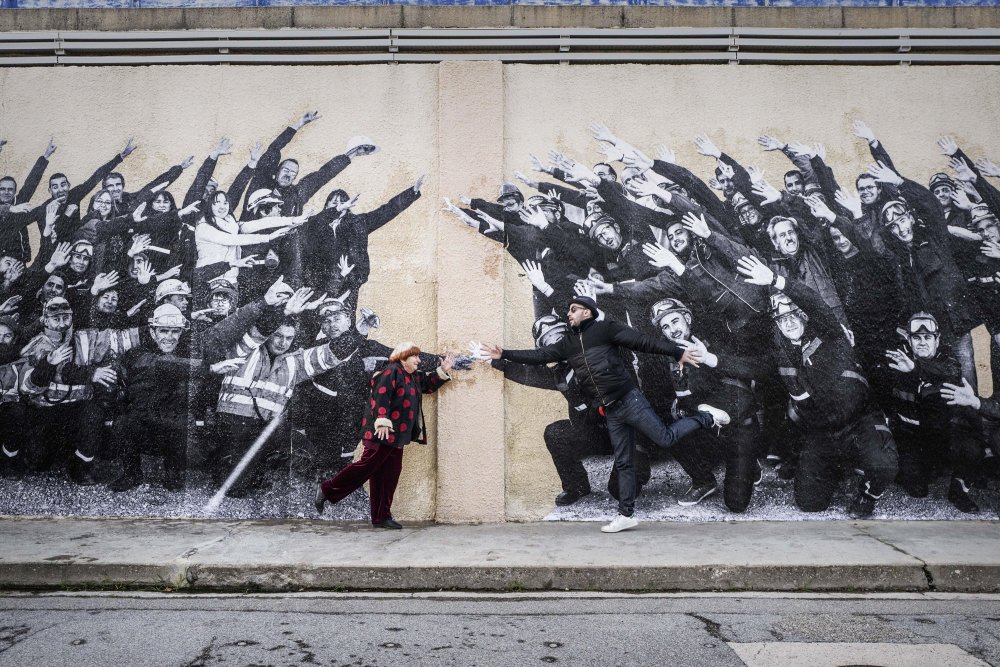
Faces Places (Visages Villages, 2017)
And, as ever, Varda is a great raconteur: as warm, witty and convivial as we have come to expect, with never a bad word to say about anyone. Even fellow New Waver Jean-Luc Godard, whose no-show for their planned reunion in Faces Places (2017) was a terribly sad, selfish moment that left her in tears, is kindly glossed over here.
But there are hints of how carefully constructed this affable persona might have been. “I play the role of a plump and chatty little old lady,” Varda told us at the beginning of The Beaches of Agnès, the “auto-bio-filmo-puzzlo self-portrait” to which Varda by Agnès is a both a sort of sequel and a sort of more accessible mass-market remake. Clues to the hidden complexity of this sweet, pudding-bowl-haircut-sporting cat lover who mixes up the words ‘chronology’ and ‘criminology’ and chuckles as if it were an unwitting mistake are there in the films themselves, which are wrought with contrasts. Moving images and still images. Analogue and digital. Cruelty and beauty. Reality and representation. Varda is nothing if not paradoxical. She claims there are two types of documentary: the one “pure and brutal”, the other “filmic”.
According to Varda, her oeuvre is firmly in the latter camp: she describes her work not as staging but as “organising” reality. Hence her coining of the phrase cinécriture – the sum total of all the decisions that go into making a film. But Varda’s cinematic writing is less an authorial signature than a giant scrawl across the surface of the screen. It’s not for nothing that Varda is so interested in graffiti that she has made not one but two films about it. In terms of making one’s mark, she leaves auteurism looking amateurish.
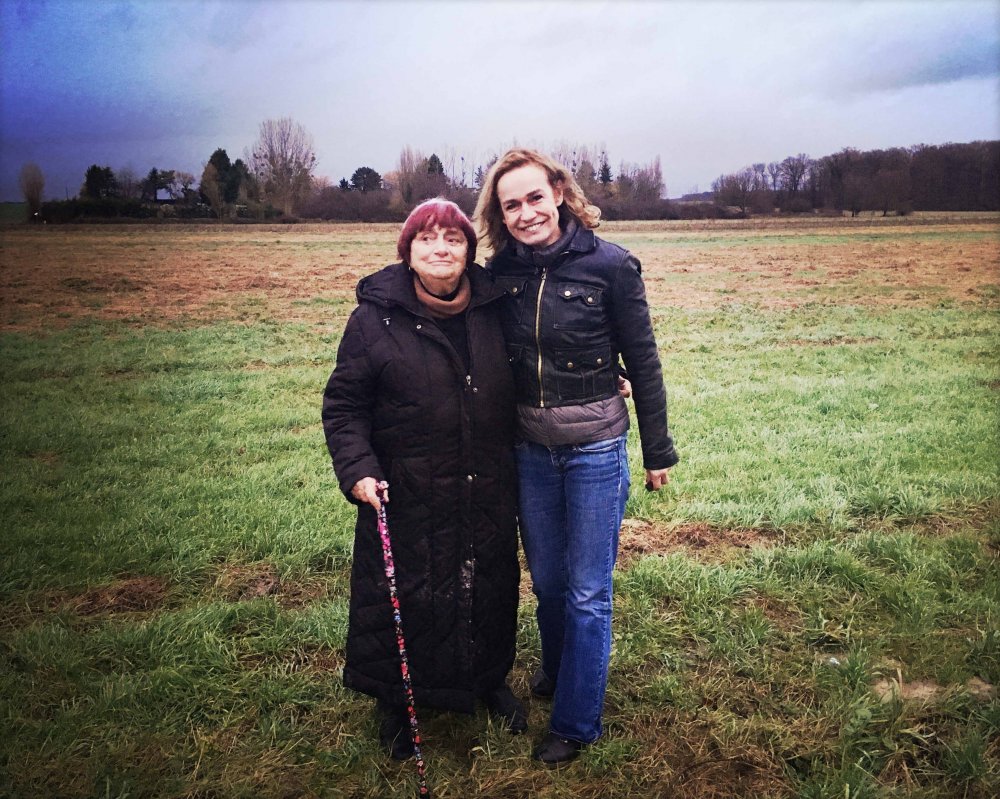
Agnès Varda and Sandrine Bonnaire reunited in Varda by Agnès (2019)
With that in mind, the film is at its most intriguing in the brief glimpses it presents of the real Agnès behind the persona of ‘Varda’. In what will undoubtedly be the most commented-on sequence in the film, she revisits the location of 1985’s Vagabond with Sandrine Bonnaire, who was 17 when she played the lead character, Mona. Their dynamic is friendly, but Bonnaire recalls a hard, punishing director who zipped the terrified actor into a body bag and who – when Bonnaire revealed the blisters she’d incurred as a result of her method-acting approach to playing a homeless woman – showed little sympathy. When Varda exclaims, with mock remorse, “I should have licked them!” but at the same time admits she wanted Bonnaire to feel marginalised, I was momentarily put in mind of the cruel and seductive female filmmaker played by Anne Parillaud in Catherine Breillat’s Sex Is Comedy (2002). One doesn’t get to be the world’s most renowned female film director without a firm grip on one’s material and reputation.
So it’s more than fitting that in this final film Varda takes her ending into her own hands. “I’ll end, now, disappearing in a blur,” she concludes. Her last words: “Je vous quitte.”
To paraphrase Sherwood Anderson, Varda by Agnès – indeed Varda’s whole career – is a story of hands. The dexterous, manicured hands of the 26-year-old holding her first movie camera. The still supple yet lined and papery hands that take centre-stage in The Gleaners and I (2000), capturing a passing lorry in their grip like a lens closing in. The film is a lovely, late-autumn work, a joy from start to finish. And yet, and yet… how thrilling it might have been to see a little bit more of the iron fist beneath the velvet glove.
-
Sight & Sound: the August 2019 issue

British cinema special: Blinded by the Light, The Souvenir, multicultural British heritage cinema, new British talents and the future of the...
-
The Digital Edition and Archive quick link
Log in here to your digital edition and archive subscription, take a look at the packages on offer and buy a subscription.




